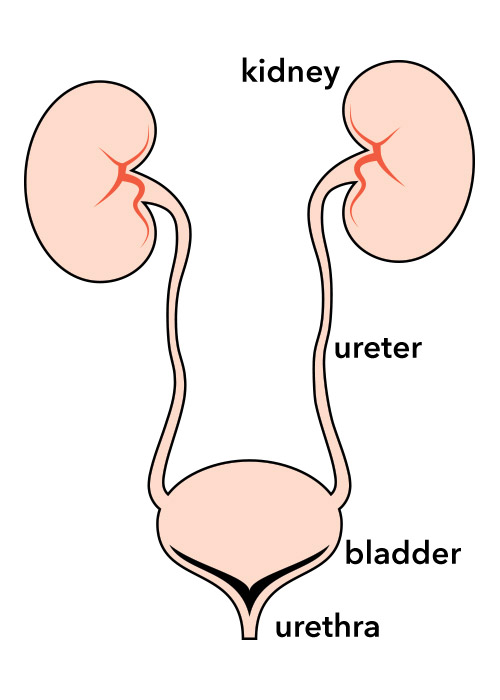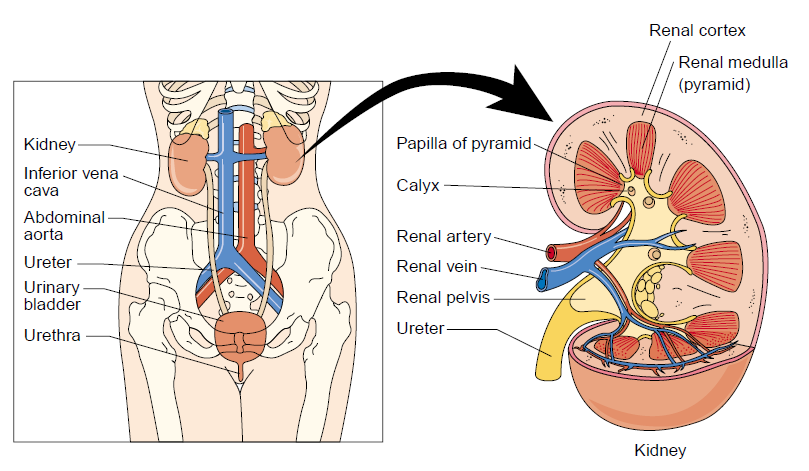What is the path of urine through the urinary system?
2 Answers
From the kidneys through the ureters to the bladder; from there through the urethra to be expelled from the body.
Explanation:
Urine is formed after a process of glomerular filtration in the kidneys.
This urine is then conducted through the ureters, twin muscular tubes that connect the kidneys to the bladder, a storage chamber.
The bladder is a muscular chamber that expands as urine fills it.
From the bladder, a muscular tube, the urethra connects to the outside.
The urethra , an internal sphincter at the junction of the urethra and bladder, and an external sphincter comprising the pelvic floor muscles, keep the urine in the bladder till it is ready to expel the urine.
For urination, the bladder walls contract and the urethra and sphincter muscles relax, to allow urine to flow out from the urethra.

Renal tubules of nephron
Explanation:
Urine is formed by thousands of nephrons present inside the paired kidneys and it is passed down the ureters, there from to the urinary bladder. Now how is it formed?
Urine is formed when the blood reaches the malpighian corpuscle that is composed of the Bowman's capsule and glomerulus. Here most of the blood plasma is filtered out into the Bowman's capsule.
Glomerular filtrate is taken down the proximal convoluted tubule (PCT). Most of the water, glucose and amino acids are reabsorbed here. Active as well as passive reabsorption occurs here.
The resulting fluid passes down the loop of Henle . Electrolytes like Na+ and K+ are reabsorbed here.
All the absorbed materials enter the peritubular capillaries.
The fluid then passes on to the distal convoluted tubule (DCT). Tubular secretion takes place here.
This fluid then passes on to the collecting duct where the tissues reabsorb some urea from it. A lot of water gets reabsorbed along collecting duct and urine becomes concentrated.
Several such collecting ducts meet to pour their fluids - now known as urine - into the Papillary duct, also known as duct of Bellini .
Papillary ducts open at the apex of renal pyramid where urine gets collected in minor calyx, later in major calyx. Calyces open in pelvis , located inside hilum of kidney.
Pelvis gives rise to duct like outlet called ureter which travels out of kidney through hilum. The ureter of each side meets the urinary bladder and pours urine into it.
When the bladder is full, the stretch receptors come to work and send the signal to brain and we feel the urge to micturate. The outlet that travels from bladder is called urethra . There are sphincters to control opening of urethral opening to void urine outside the body.

( )
)

